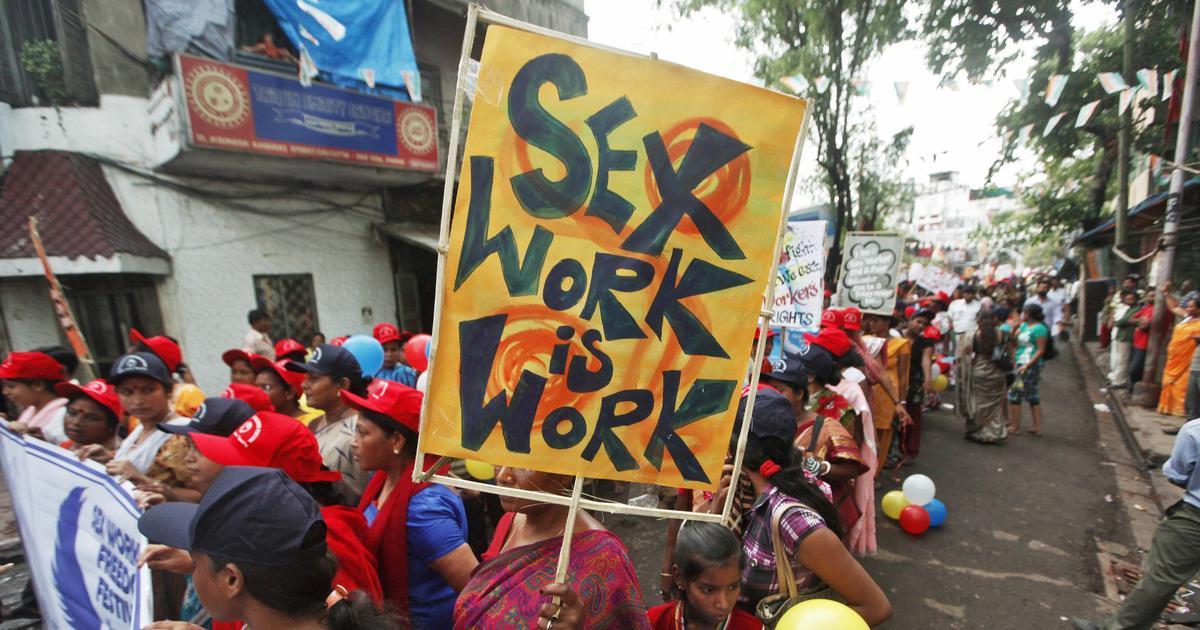1. The state needs categories. In a Census exercise, sex workers were once categorised alongside beggars, leading to outrage from sex workers’ groups. Sex workers have since been demanding to be seen as part of the unorganised workforce sector.
Their “worker” identity appears to be only discursive and does not translate into any real benefit or identity as far as state benefits go. They only pop up in the system during public health dialogues, or in the context of trafficking laws, but not in relation to entitlements as citizens or labour reform.
Adult women are generally infantilised by the state; sex workers in special ways. Sex workers are either victims or criminals in the eyes of the state – victims of trafficking who must exit it or remain in the custody of the state until they reform (the state cannot believe that a woman would choose sex work), or criminals (accomplices to traffickers) who must be contained and punished. It does not know what to do with “the unrepentant sex worker”.
Can a legal re-framing (decriminalizing or legalizing prostitution) change this? Can the categorization of sex workers as part of the unorganized sector make them visible as citizens?
2. The Sex Workers’ Manifesto presented at the first National Conference of Sex Workers in 1997 at Salt Lake Stadium in Kolkata was the first of its kind. Eight pages of firebrand feminism in the form of FAQs examining the history of sexuality in India, theorising their own stigmatised status within the binary of the “whore and the Madonna”, and presenting sex work as a form of labour.
At the stadium, 4,000 sex workers cried aloud at the end of a speech “Aamra kormi, jouno kormi” [‘we are workers, sex workers’], reverberating power and determination. The manifesto also stressed upon the identities of sex workers as mothers, as supporting families, as heteronormative and domesticated in various ways, as not “man-hating”, and as located within the normative structures familiar and dear to mainstream society. It placed upfront the cunning of the patriarchy, allowing men to have access to all women’s bodies, either through the institution of marriage or prostitution.
3. This was before Dalit-Bahujan feminists’ assertions that Dalit women comprised the majority of women in prostitution, completely reframing the Indian “sex wars” into a caste question. This was a hairpin turn in the Indian feminist landscape, occurring in the aftermath of the controversial bar dancers’ ban.
Would feminists who stood up for bar dancing as a matter of right to livelihood do the same for manual scavenging, knowing it to be work ascribed to groups occupying the lowest place in the caste system, an expression of caste exploitation? What is more important: dignity (through the abolition of caste-based occupational oppression) or livelihood (even if it maintains caste-based occupational oppression)?
4. There is no doubt that caste determines life trajectories in India, and bodily autonomy. That there is a “troubled connection” between caste, sexuality and labour.
The devdasi system is one example of how Brahmanical patriarchy ensured upper caste men had systemic access to lower caste women’s bodies. A devdasi was marked as a “ritual functionary who is sexually accessible”. A local Marathi saying makes this explicit: “Devdasi devachi, bayko sarva gavachi” or ‘servant of god, but wife of the whole town”.
Lavani dancers (usually women of the Kolhati nomadic community) were known in local parlance as “ugadya mandichi jaat”, or the caste of those whose women move around with bare thighs. This exploitation existed alongside sexual double standards and societal hypocrisy (“untouchable” women no longer being untouchable when it came to sexual exploitation).
This “availability” of women from marginalised and Dalit castes is the direct opposite of the shuttered existence of the upper caste woman, who is marked as “chaste”, or unattainable.
Rege’s study of lavani song lyrics showed how lavani constructed lower class women as ‘desirable and sexual and adulterous’. Songs in the voice of a lower caste prostitute expressed intense bodily needs and desires such as wanting to see their intercourse in the mirror (marking them shameless), whereas those in the voice of the wife expressed awe at the husband’s virility, and desired motherhood.
5. When I went to a lavani dance workshop with the Sangeet Bari team and lavani artiste Shakuntala Nagarkar, I realised that there was something I just wasn’t getting. My Bharatnatyam-trained body was too sanitised to carry out the erotically expressive moves the lavani required of me. I could mimic some of the sensuality, the coquettishness, but the directness of eye contact demanding sexual attention would just not happen.
I realised it was because of the caste boundaries drawn around me that had contained my sexual expression for generations like an iron vault. Without knowing it, my body had been trained to behave as an upper caste middle class woman. Unspoken but lived and experienced caste-based “rules” (especially around a constructed modesty) govern our bodies as much as our minds. We embody our caste identities without knowing it.
6. Rather than comparing sex work with manual scavenging or other forms of caste-based exploitation, sex workers themselves often articulate a closer connection to domestic labour, placing sex work on the continuum of work that housewives do. They equate their labour not just “as mundane and as strenuous” as the labour of poor women generally is, but also with the private labour of “wives”.
Across castes women do unpaid labour or care work, of the household and of intimacy, which is what sex workers come closest to equating their labour with. Can we ever see intimacy within marriage as labour? As a chore?

Excerpted with permission from Intimate City, Manjima Bhattacharjya, Zubaan.










